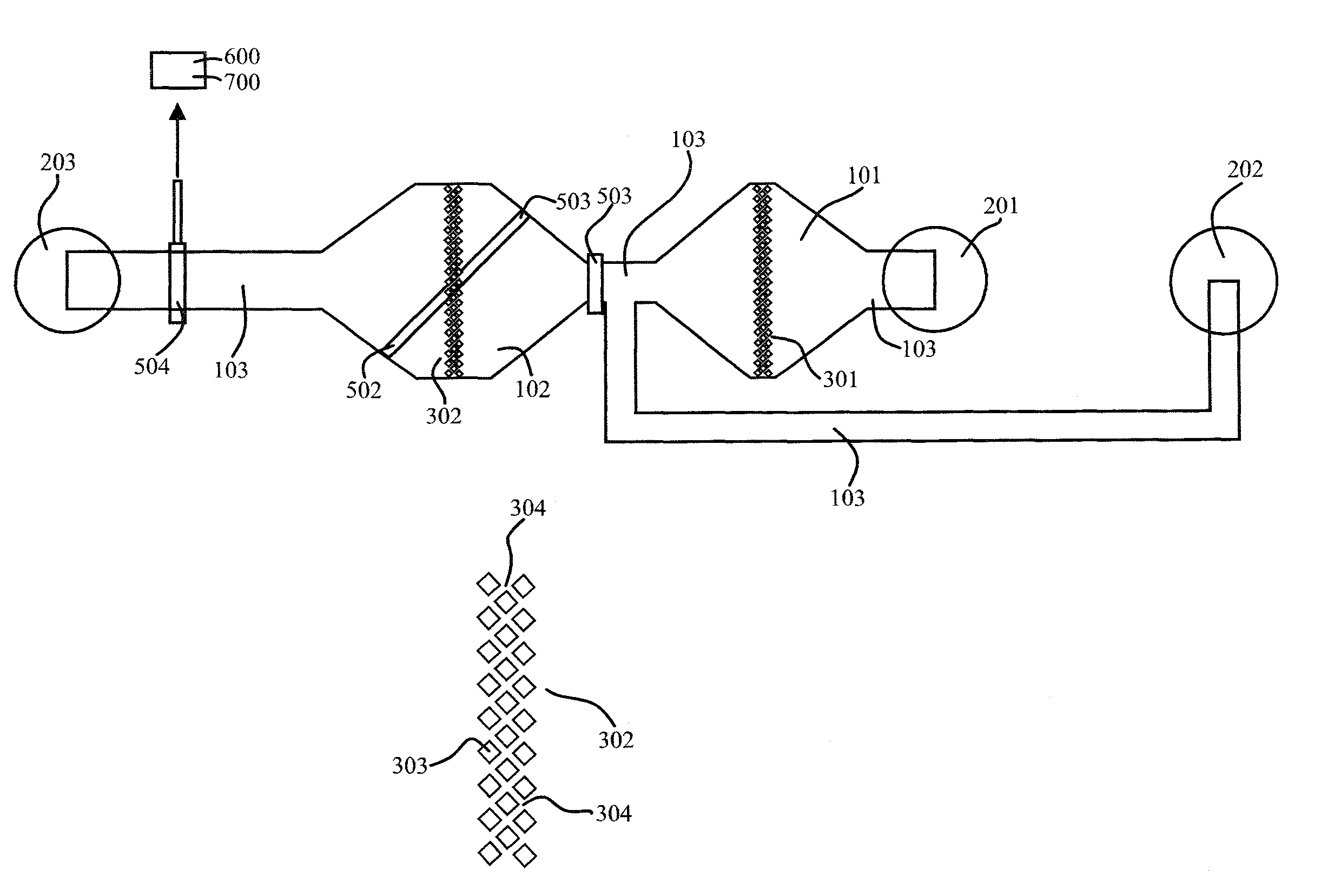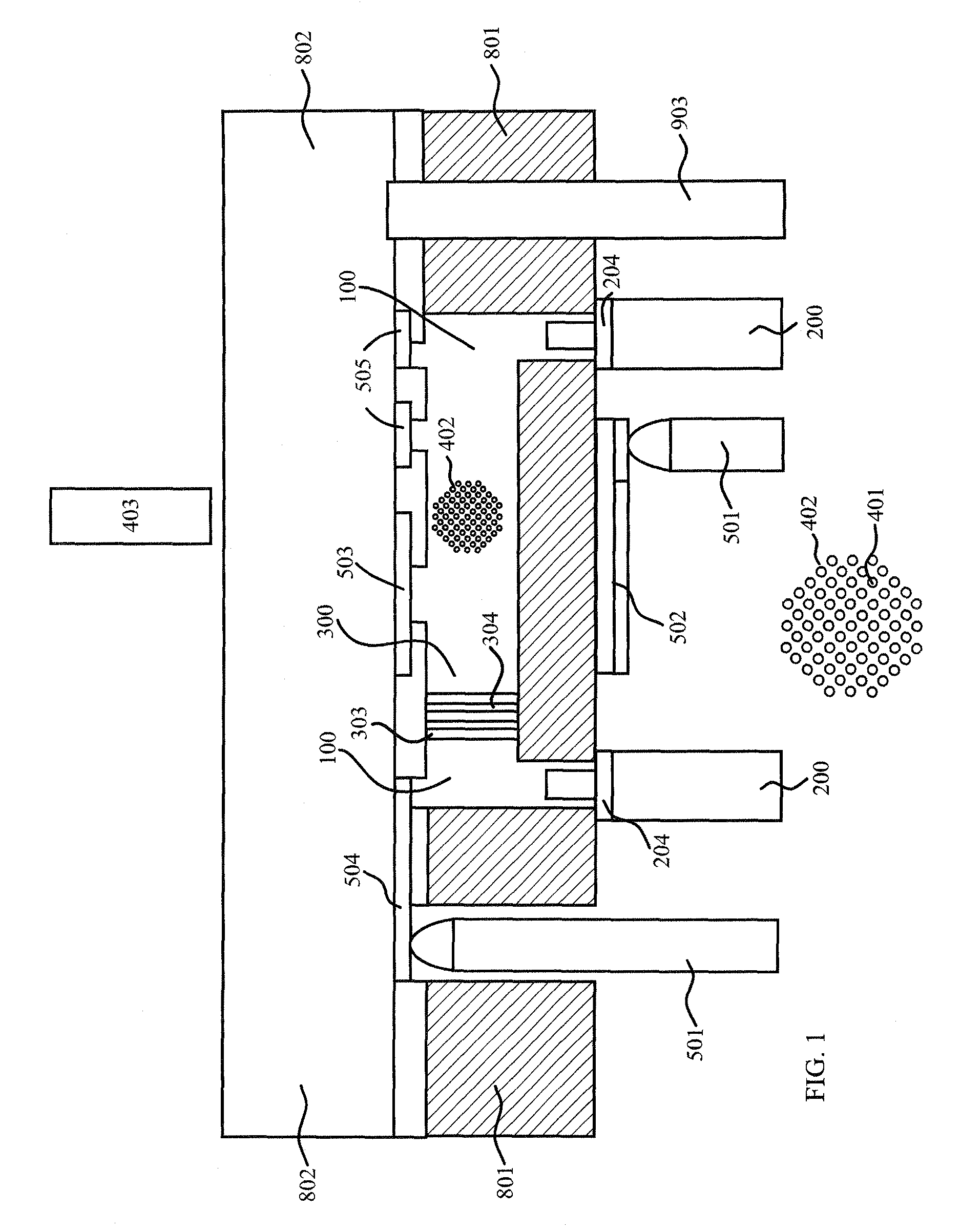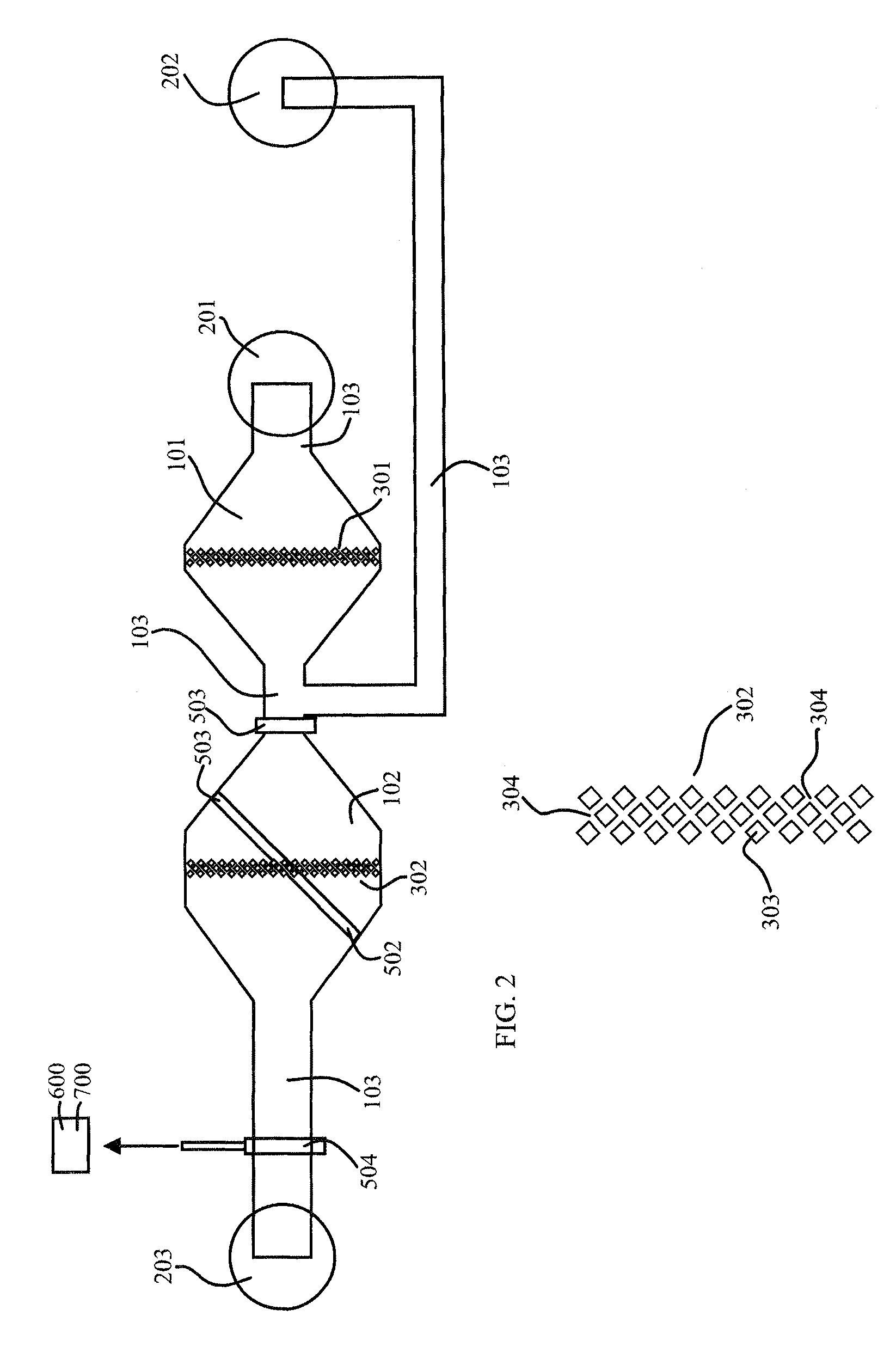Microfluidic chip devices and their use
a microfluidic chip and chip technology, applied in the field of microfluidics, can solve the problems of not being able to achieve the effects of microfluidic methods, not being able to manipulate magnetic particles, and affecting the performance of microfluidic methods, so as to improve the performance and efficacy of assays, improve efficacy and sensitivity, and prevent bubble formation in liquid stream
- Summary
- Abstract
- Description
- Claims
- Application Information
AI Technical Summary
Benefits of technology
Problems solved by technology
Method used
Image
Examples
Embodiment Construction
[0038]When using microfluidic on-chip systems for performing biological solid phase assisted binding assays in connection with magnetic microbeads, the magnetic microbeads have a tendency to cluster. Clustering prevents the target binding partners present in the sample from being efficiently attached to the surface of the magnetic microbeads and also prevented effective purification in the washing steps. In accordance with one aspect of the invention, clusters of magnetic microbeads could be disintegrated or disassembled by forcing the magnetic microbeads through a microfluidic pillar filter. By manipulating said magnetic microbeads their surfaces were liberated and could be contacted from all directions by the surrounding liquid solution flowing through the microfluidic channel system and thereby the reactions between the target binding partners and their counterparts were improved and formation of immobilized binding pairs is increased. The sensitivity of the binding assays was im...
PUM
| Property | Measurement | Unit |
|---|---|---|
| size | aaaaa | aaaaa |
| size | aaaaa | aaaaa |
| internal diameter | aaaaa | aaaaa |
Abstract
Description
Claims
Application Information
 Login to View More
Login to View More - R&D
- Intellectual Property
- Life Sciences
- Materials
- Tech Scout
- Unparalleled Data Quality
- Higher Quality Content
- 60% Fewer Hallucinations
Browse by: Latest US Patents, China's latest patents, Technical Efficacy Thesaurus, Application Domain, Technology Topic, Popular Technical Reports.
© 2025 PatSnap. All rights reserved.Legal|Privacy policy|Modern Slavery Act Transparency Statement|Sitemap|About US| Contact US: help@patsnap.com



